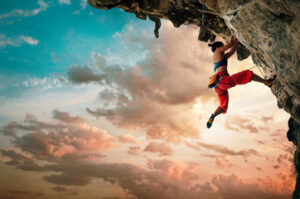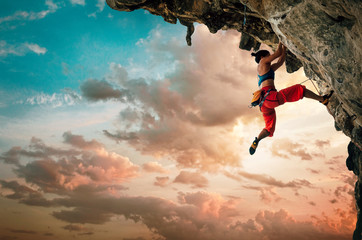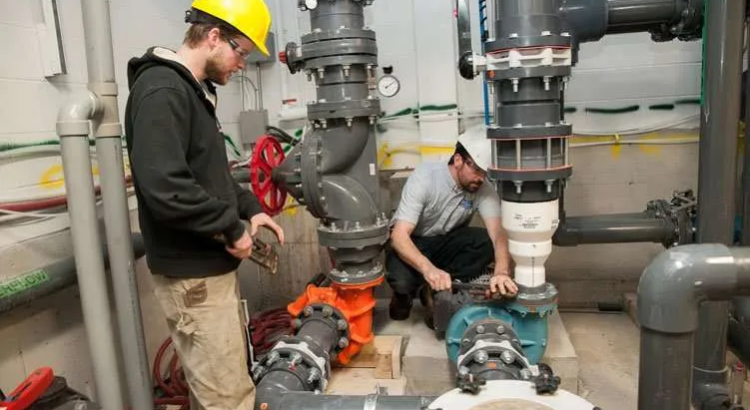Climbing is like a drug: newcomers experience immediate heady highs, and committed users require steadily harder climbs to satisfy their addiction. It has its own subculture with a unique language, legends, and achievements that provide common ground for partners from radically different backgrounds.

While climbing may look intimidating on television, where competitors are roped and perform amazing feats of strength without any safety nets, the sport is actually fairly accessible. Its biggest stars routinely rub shoulders with first-timers at the same crags and gyms. Get in touch with Alta Climbing for professional support.
Climbing is a physical activity that relies on both strength and endurance. Its demands are largely determined by the terrain on which the climb is performed, and can be categorized as either “technical” or “non-technical”. Technical climbing requires the use of specialized equipment to ascend a steep rock formation or artificial structure, often with the assistance of a rope. Non-technical climbing does not require the use of ropes, and instead focuses on balance, agility and body movement to overcome obstacles and reach the summit of a hill or mountain. The sport of climbing has evolved through the pioneering efforts of individual climbers, who have developed and refined their techniques to tackle new routes at increasingly higher grades and with greater difficulty.
In addition to improving their own performance, climbers also strive to help others achieve first ascents of new routes and thereby contribute to the evolution of the sport. Consequently, the number of climbers has steadily increased over the last several decades. Despite the rising popularity of this sport, however, relatively few studies have investigated its physiological and metabolic responses.
Although previous research has examined the muscular strength and endurance of climbers (e.g., dynamometry), cardiovascular responses to climbing have been more challenging to assess. Specifically, while climbing is known to elicit an exercise pressor response that elevates heart rate and mouth pressure (i.e., the Valsalva-like effort), few studies have examined its effect on cardiovascular structure and function or its relationship to limb power.
The present study examined the blood pressure and heart rate responses to indoor rock climbing (bouldering) and associated training exercises in six well-trained climbers. The subjects completed two boulder problems and three training exercises to fatigue, while blood pressure (BP), heart rate, and mouth pressure were measured throughout the tests. Results showed that both bouldering and the three training exercises induced a strong exercise pressor response, which significantly elevated intra-arterial BP and heart rate. These increases are likely due to the transmission of intrathoracic and intra-abdominal pressures to the aorta via the triceps brachialis. Moreover, the results suggest that climbing-associated training is a potent inducer of high cardiovascular responses, which might be attributed to its high demand for arm power and a high rate of fatigue.
Technique
The muscle memory that experienced climbers develop enables them to move with greater ease and efficiency. They know, for example, how to weight their feet properly to maximize the holds they can reach and how to twist a little further to hit a far-left handhold with one hand. These types of fine-tuning techniques free up cognitive space so they can focus on the next series of moves. This type of mental decompression allows the climber to execute a sequence more fluidly, which conserves energy.
Many beginner climbers fall into the trap of following a ladder-like pattern of movement, using a step, grab, step, grab rhythm. However, climbing should be a dynamic activity that utilizes momentum along the route. For example, a climber should always be stepping up onto new hand holds before reaching down for them. This way, the climber takes advantage of upwards momentum and minimizes a static, jarring arm pump.
Climbers should also take full advantage of their feet, maximizing the hold they are standing on before moving to another foothold. For example, a climber should never flag (pass a leg in front of the other) until they have a good grip on the foothold they are currently standing on. When they do flag, it is best to use the leg that is closest to the wall. This is called the inside-flag and is a great way to get into position for a heel hook or back flag.
Lastly, a climber should learn how to “pattern” their body to better utilize the available hold. For example, if they are clinging to a thin edge with their hands, it would be helpful to palm the edge to create counter-pressure for staying in place and not falling off. Likewise, if a climber is stemming, they can smear their feet on either side of the corner to keep their balance and not fall off the rock.
Learning these nuances of positioning, movement, and holding provides an invaluable arsenal to a climber. It makes all the difference when it comes to climbing efficiently and successfully.
Psychology
Climbing is a complex sport that requires a great deal of physical and psychological endurance. It’s almost like a drug, with new users experiencing immediate heady highs while regular climbers face a constant struggle to keep their addiction under control.
Cognition is also critical for climbing performance, and the ability to quickly solve problems and make decisions under pressure is a key factor in high-level competition. In order to improve cognitive skills, climbers can take part in mental training exercises, which can help them stay focused on the task at hand and avoid distractions. These exercises can be a great way for climbers to practice coping strategies, and develop self-efficacy in difficult situations.
The desire for status and prestige is often a driving force behind social climbing. In addition to the heady sensations that come with a good climb, status can provide financial benefits through lucrative job opportunities and access to resources that would otherwise be unavailable. As a result, social climbers can engage in strategic behaviors, such as networking and adopting the mannerisms of their desired social circle, to elevate their social standing.
While research into the specific physical requirements of climbing have been extensive, research on the psychological aspects of the sport is less well-established. A deeper understanding of the psychology of climbing could enable athletes to achieve a greater level of success.
For example, it would be valuable to explore the relationship between time management and emotion regulation in Olympic climbers, thereby adding to the existing knowledge of how to optimise Olympic performance. Similarly, it would be important to expand on the current research into route previewing by exploring how climbers mentally rehearse the movements they want to perform and how this affects their perceived difficulty.
Another important psychological aspect of climbing is trust, which can be a barrier to high-level performance. For competition climbers, this involves a level of trust that their bodies will be able to meet the complex physical demands of their performance. Developing this trust can be a challenge, especially when climbers have been injured in the past or have experienced setbacks during their careers. Climbers can work to increase their trust through a variety of approaches, including using a coach, engaging in pre-performance rituals and practicing behavioural interventions such as identifying unhelpful self talk.
Motivation
Climbing is a unique sport that requires both physical and psychological strength. A lot of people are drawn to it because it is challenging and exciting, but many lose their motivation to climb for a variety of reasons. Some people lose their drive because they are not getting enough exercise, others because they feel that the effort is too much, and some have to give up climbing altogether due to injury or illness. Often, the best way to regain your enthusiasm is to find a new goal.
Climbers who do well at the highest level have a clear vision of what they want to achieve. This may be to send a certain route or simply to be the best climber in their local area. Whatever the goal, it must be realistic. A good start is to think about what inspires you, and this could be a physical challenge, the aesthetic of a route, or a specific performance goal in competition.
Developing this vision is then followed by a plan of how to get there. It is important to develop this plan in a way that is balanced between physical training (power, endurance and technique), mental training (confidence, focus and resilience) and psychological training (overcoming the fear of failure). The balance needs to be maintained throughout an extended period of time, as it takes a long time to build the required strength.
There are many different approaches to this process, but the key is to break the process down into manageable chunks and work on them in a structured way. For example, to send a particular route, most people will first split it into sections and then work on each of these in isolation. Once they have the moves down, they will then try to link the sections together, and eventually complete the whole route.
It is also a good idea to keep an eye on the big picture, and remember that climbing is not a zero-sum game. The best climbers will often rub shoulders with first-timers at the crag or gym, and it is important to avoid an overly competitive mindset.








